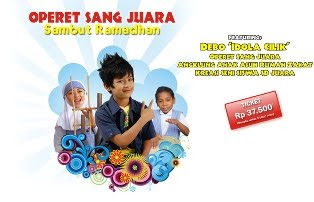My Indonesia
Indonesia, the largest archipelago and the fifth most populous nation in the world, has a total of 17,508 islands, of which about 6,000 are inhabited. Indonesia extends 3,198 miles (5,150km) between the Australian and Asian continental mainland and divides the Pacific and Indian Oceans at the Equator. With a total land area of 767,777 square miles (1,919,443 sq. km), its 190 million inhabitants are made up of 300 ethnic groups who speak an estimated 583 different languages and dialects. There are five main islands in Indonesia. These are: Java, Sumatra, Kalimantan, Sulawesi and Irian Jaya.
Across its many islands, Indonesia consists of distinct ethnic, linguistic, and religious groups. The Javanese are the largest and most politically dominant ethnic group. Indonesia has developed a shared identity defined by a national language, ethnic diversity, religious pluralism within a majority Muslim population, and a history of colonialism and rebellion against it. Indonesia's national motto, "Bhinneka Tunggal Ika" ("Unity in Diversity" literally, "many, yet one"), articulates the diversity that shapes the country. However, sectarian tensions and separatism have led to violent confrontations that have undermined political and economic stability. Despite its large population and densely populated regions, Indonesia has vast areas of wilderness that support the world's second highest level of biodiversity. The country is richly endowed with natural resources, yet poverty is a defining feature of contemporary Indonesia.
Across its many islands, Indonesia consists of distinct ethnic, linguistic, and religious groups. The Javanese are the largest and most politically dominant ethnic group. Indonesia has developed a shared identity defined by a national language, ethnic diversity, religious pluralism within a majority Muslim population, and a history of colonialism and rebellion against it. Indonesia's national motto, "Bhinneka Tunggal Ika" ("Unity in Diversity" literally, "many, yet one"), articulates the diversity that shapes the country. However, sectarian tensions and separatism have led to violent confrontations that have undermined political and economic stability. Despite its large population and densely populated regions, Indonesia has vast areas of wilderness that support the world's second highest level of biodiversity. The country is richly endowed with natural resources, yet poverty is a defining feature of contemporary Indonesia.
Wednesday, April 8, 2009
LAYANG LAYANG (KITE FLYING)

Layang-layang or kite flying is a very popular pastime for Indonesian children. Provinces throughout the country have their own designs. There are two distinct types of kites: the first is those that are just to be used for flying which have a tailed attached to them to balance the kite; and those that will be used for one-on-one dogfights, a favorite pastime amongst kite flyers.
Fighting kites do not have tails attached to them. They are made from light bamboo and waxed paper. Often the string that is attached to these kites is coated with crushed glass. The string is dipped in a solution of crushed glass, which has been boiled with ka, chemicals and dye. The mixture acts as an adherent so the tiny particles of glass will cling to the string. The string is strung out on a small rack to let it dry. This process makes the string very sharp and capable of cutting the opponents string.
Fighting kites do not have tails attached to them. They are made from light bamboo and waxed paper. Often the string that is attached to these kites is coated with crushed glass. The string is dipped in a solution of crushed glass, which has been boiled with ka, chemicals and dye. The mixture acts as an adherent so the tiny particles of glass will cling to the string. The string is strung out on a small rack to let it dry. This process makes the string very sharp and capable of cutting the opponents string.
Ready-made glass coated string can also be bought in various thickness. . Most kite flyers opt to buy ready-made string as it is a long and messy process to prepare their own. The choice of the thickness of the string would depend the on the size of the kite, and a greater consideration, the budget of the buyer. If the owner is not careful this string can also cut his fingers as well!
The object of the game is to try and cut the opponents' kite loose. The way that the string is attached to the kite determines the control that the flyer has over his kite. If the two holding strings are attached far apart to the frame of the kite, this will make it heavier to hold on to when it is flying. However, this gives the kite flyer greater control over the movements of the kite.
Labels: Indonesian Traditional Games
0 Comments:
Subscribe to:
Post Comments (Atom)



,+Jakarta.jpg)




Post a Comment